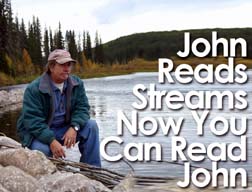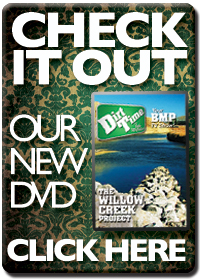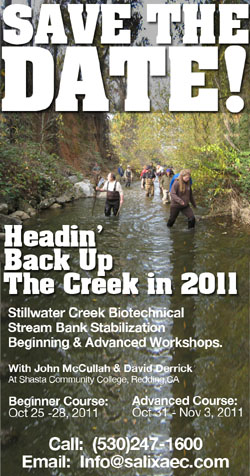Whiskeytown Home | The Cooperative Agreement | Why Remove Logging Roads? | Developing an Erosion Inventory for Road Decommissioning | Outsloping Peltier Valley Road | The Sediment Pond | Logging Camp Road Removal | Landing Removal | Conclusion |
Whiskeytown Logging Road Removal
Project
Why
Remove Logging Roads?


Roads cause erosion and greatly increase the potential for slope failure
during large and episodic storm events. Most gullies in mountainous
watersheds are road related. Roads alter the natural drainage
patterns, and cutslopes intercept sub-surface flow and convert it
to surface runoff. Drainage ditches and berms channelize concentrated
flows and efficiently deliver sediment to streams. Most importantly,
roads are frequently constructed by placing roadfill material in
drainage channels. That roadfill then becomes part of the
drainage system and, given enough time, has a high probability of
being delivered to downslope rivers and streams as sediment.
Roads alter natural basin hydrology. Studies of small basins conductedin the western Cascade Mountains indicate that timber harvest produced detectable changes in peak discharges. These increases were attributable to changes in flow routing (due to roads) rather than mere changes in water shortage due to vegetation removal (Jones and Grant, 1996).
Poor road drainage and unstable fill can initiate landslides, especially with roads built on steep terrain in geologically unstable lands. During the winter of 1996-1997, many road-related landslides occured in the Pacific Northwest. Several lives were lost in Northern California and Oregon. The famous Stafford debris landslide, located on recently-harvested timberland in Northern California, was apparently initiated by skid roads and waterbars which concentrated and diverted overland flows into a swale area (Gray, 1997). During the New Years storm of 1997, Whiskeytown National Recreation area received over 48 cm (19 in) of rainfall over a 48-hour period. This rainfall initiated two large landslides in Whiskeytown NRA - one in the Brandy Creek watershed and one in the Paige Boulder Creek watershed.
Both the Paige Boulder debris slide and the Brandy Creek slide were caused by saturated roadfill failure from abandoned logging roads located high up in the watershed. National Park Service (NPS) Geologist, David Steensen, reported that the Paige Boulder landslide began as a small (pickup truck sized) failure originating in a headwater swale, precisely at the intersection of a timber skid road. The saturated roadfill moved downslope and turned into a debris torrent when it entered Paige Boulder Creek. The debris torrent reached heights of over 10 meters and scoured approximately 7 kilometers of channel. Prior to the New Years storm, much of the channel was choked with remnants of past logging, such as landings and haul roads, which were also eroded away. Two bridges were destroyed by the debris torrent. It is estimated that at least 150,000 m3 of sediment was delivered to Clear Creek (Steensen, 1997). Much of that sediment was roadfill from the old roads and landings.
In the Pacific Northwest, road-induced erosion is responsible for vast quantitities of sediment which impacts streams and degrade fish habitat. With the declining fisheries and the numerous threatened or endangered runs of salmonids, there is a desperate need to promote an awareness of how roads impact watersheds and to develop watershed restoration strategies that reduce the potential for these impacts. The solutions to these problems will also require specially trained watershed restorationists, from geomorphologists to heavy equipment operators, to identify and treat the numerous watersheds impacted by roads. Shasta College and Whiskeytown National Recreation Area are addressing these road issues by cooperatively engaging in ecosystem restoration activities and encouraging education and technology transfer of these watershed experiences.
 ..... .....
..... ..... . ......................
. ......................
copyright 2011 - Salix Applied Earth Care - 2455 Athens Ave Ste. A - Redding, CA 96001 - (530)247-1600


